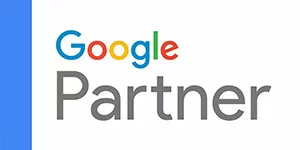Top 5 Most Effective Content Marketing Strategies

Content Updated: June 1, 2025
Content marketing is no longer optional; it is central to brand growth in 2025. With increased digital noise and evolving algorithms, marketers face pressure to create meaningful, data-driven, and multi-format content that cuts through the clutter. Today, content marketing is not just about SEO or brand awareness—it’s about delivering genuine value, fostering trust, and generating leads with a clear return on investment (ROI). According to HubSpot’s 2025 State of Marketing Report, 82% of marketers say content is the most effective tactic in building audience trust and driving conversions.
More importantly, content marketing is now a measurable investment. Brands expect specific outcomes: more leads, deeper engagement, and higher retention. To do this successfully, marketing strategies must integrate both creative storytelling and performance-driven planning.
Here are five forward-thinking strategies aligned with 2025 content marketing trends.
1. Know Your Market & Personalize the Experience
Hyper-personalization is no longer a luxury—it’s expected. Filipino consumers, for instance, spend an average of 3.5 hours daily on social media and expect highly targeted and relevant messaging. With the rise of AI-driven customer segmentation, brands should go beyond surface-level demographics.
To refine your audience targeting:
According to a report from Salesforce, 73% of consumers expect companies to understand their unique needs. Personalized content results in 3x higher engagement rates and 2x improved conversion, making this a non-negotiable strategy.
Platforms like Segment and Dynamic Yield allow for dynamic content that adapts to the user’s behavior. Tools like OneTrust and TrustArc help manage customer data ethically and in compliance with privacy laws.
2. Deliver Content In Multiple Formats and Channels
In 2025, single-format content is outdated. Audiences consume content in diverse ways, across many platforms. The goal is to maintain consistency in voice while tailoring the format to the platform’s behavior. For example, TikTok videos for Gen Z, LinkedIn articles for B2B professionals, and interactive blog posts for website visitors.
Content formats to prioritize:
Use a Paid-Owned-Earned (POE) media strategy:
According to Demand Gen Report, interactive content generates twice the engagement rate compared to static content.
3. Lead with Value: Freemium Resources and Educational Tools
Modern consumers expect something in return for their attention. Offering value-rich, no-strings-attached content earns their trust and primes them for long-term engagement.
High-performing formats in 2025 include:
Semrush reports that gated content like downloadable toolkits can increase lead generation by 30% when paired with strong email nurturing.
According to Edelman Trust Barometer, 67% of consumers say brand trust is built on a brand’s ability to educate.
Examples include:
4. Combine Social Media with Video Storytelling
In 2025, video dominates. Brands that combine storytelling with platform-native video formats outperform competitors by 40%, per Wistia’s State of Video.
Effective tactics:
Use data to guide creation. YouTube Studio, TikTok Analytics, and Meta Insights offer engagement metrics for refinement.
According to Animoto, 93% of brands report getting a new customer via social video.
5. Create Purpose-Driven Branded Content
Purpose-driven marketing builds emotional connection. In 2025, brands with social or cultural relevance grow twice as fast, according to Edelman’s Trust Barometer.
Branded content works when it puts audience values at the center:
Examples:
Nano and micro-influencers often drive better engagement and trust than celebrity endorsers. Partnering with creators who align with your values improves authenticity and reach.
Formats to explore:
Content marketing in 2025 is about relevance, empathy, and performance. Filipino consumers want content that reflects their lifestyle, answers their questions, and supports their values. Strategies that combine personalization, diverse content formats, value delivery, video storytelling, and brand purpose are outperforming outdated SEO-first tactics.
Content is no longer about creating more—it’s about creating what matters.
Marketers who embrace smarter, data-informed storytelling will build stronger brands, generate higher ROI, and create meaningful long-term relationships with their audience.









